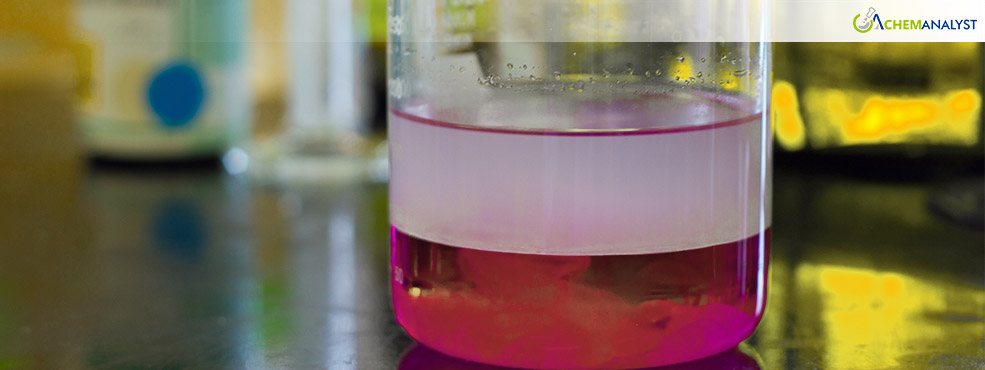Welcome To ChemAnalyst

Isopropyl Alcohol (IPA) is a versatile solvent widely used in pharmaceuticals, personal care products, and electronics manufacturing. Its rapid evaporation and antiseptic properties make it a key ingredient in hand sanitizers, disinfectants, and medical wipes. In industrial settings, IPA is employed in cleaning and degreasing applications, especially in the electronics and printing industries, due to its non-corrosive and fast-drying nature.
I. Introduction
Isopropyl Alcohol (IPA), or isopropanol or 2-propanol, is a colorless, volatile, flammable liquid with a strong odor and pungent smell as well as good solvent properties. Being a secondary alcohol, IPA is of great utility since it is water-miscible, less toxic, and has high evaporation speed. Originally used for cleaning and disinfection, IPA has diversified well beyond this domain into a broad range of industries. From medicine to electronics and from the automobile to agriculture, its stability, economic viability, and chemical inertness have catapulted it as a default industrial solvent and formulation ingredient across the world's manufacturing environments.
II. Industrial Applications by Sector
Automotive & Transport
IPA finds widespread application in the automotive industry as a metal part degreasing solvent, brake cleaner composition, and windshield de-icer. It is very much suitable for surface preparation prior to painting or coating due to its fast evaporating characteristic, which produces contaminant-free surfaces in auto manufacturing and repair work.
Construction & Infrastructure
IPA in construction is used as a surface, tool, and adhesive cleaner. It can also be used in the production of sealants and primers because of its compatability with diverse resins and polymers for durable bonding and resistance to water in structural and civil use.
Electronics & Electricals
The electronics sector prefers IPA due to its non-conductive and residue-free cleaning of delicate parts and circuit boards. It dissolves flux residues, oils, and particulates without corroding metals or harming delicate hardware, and thus it is priceless in semiconductor and PCB manufacturing environments.
Agriculture & Fertilizers
IPA is a carrier solvent in agrochemical and pesticide sprays. It improves the effectiveness of active ingredients and ensures uniform coverage on leaves. It is an equipment and tool disinfectant for controlled-environment agriculture.
Healthcare & Pharmaceuticals
Perhaps the most commonly known applications of IPA are for pharmaceutical-grade antiseptics and disinfectants. Due to its quick antimicrobial activity against bacteria, viruses, and fungi, it's a necessity to incorporate into surgical scrubs, sanitizers, and pharmaceutical cleanroom procedures.
Food & Beverage
Though controlled, the food-grade IPA is utilized in food processing plants as a surface sanitizer and in equipment cleaning applications necessitating specialized handling. It provides hygienic conditions without the residual trace of poisonous chemicals.
III. Market Demand and End-User Industries
The world demand for isopropyl alcohol has been constantly increasing because of its extensive usage in industrial cleaning, electronics, and cleanliness. The pharmaceuticals and medical sectors were among the largest users prior to the pandemic and post-pandemic, and the electronics sector continues to increase its applications worldwide for circuit maintenance and production. Emerging industries like green power and lithium-ion battery production are now looking to IPA for chemical blending and electrode cleaning. Moreover, the high-precision manufacturing trend has further boosted the usage of IPA in car and aircraft parts where contaminant control is the priority.
IV. Product Grades and Specifications
IPA is commercially available in various grades tailored for specific applications:
• Technical Grade for industrial cleaning and degreasing
• Pharmaceutical Grade (USP) for use in medical and cosmetic formulations
• Electronic Grade with ultra-low impurity levels for semiconductor and microelectronics
Typical purity levels range from 70% (aqueous) to 99.9% (anhydrous), depending on the requirement. Advanced purification methods ensure compliance with sector-specific standards like REACH, USP, or SEMI.
V. Substitutes and Limitations
Where IPA is versatile, it is nonetheless challenged by substitutes in the form of ethanol, acetone, and methyl ethyl ketone (MEK). Ethanol, for instance, has higher use in beverage and some medical applications owing to its lower toxicity. IPA, however, remains the choice for its fast rate of evaporation, non-corrosivity, and solvent tolerance. Flammability and VOC emissions are its liabilities in highly regulated systems, but carefully planned formulation and containment practices generally reduce the hazards.
VI. Innovations in Applications
Current R&D has seen the creation of bio-based IPA from renewable raw materials like corn and cellulose owing to sustainability needs in industries In the field of electronics, ultrapure IPA now finds application in EUV lithography techniques. High-purity IPA has also been used by companies such as LG Chem in the production of lithium batteries due to its application in cathode and anode material preparation. 3D printing technologies also utilize IPA for subsequent processing of photopolymer resins, showing its versatility in future manufacturing.
VII. Conclusion
Isopropyl alcohol is a building block chemical for diverse industrial uses. Its effectiveness, low toxicity, and versatility as a solvent, cleaner, and disinfectant render it indispensable to the industries from pharmaceuticals to electronics. As regulatory and environmental pressures reshape the world of chemicals, IPA's evolution—especially in green and high-purity forms—ensures that it will continue. Through constant innovation and growing applications, IPA will be a cornerstone chemical of modern-day manufacturing environments.
We use cookies to deliver the best possible experience on our website. To learn more, visit our Privacy Policy. By continuing to use this site or by closing this box, you consent to our use of cookies. More info.
